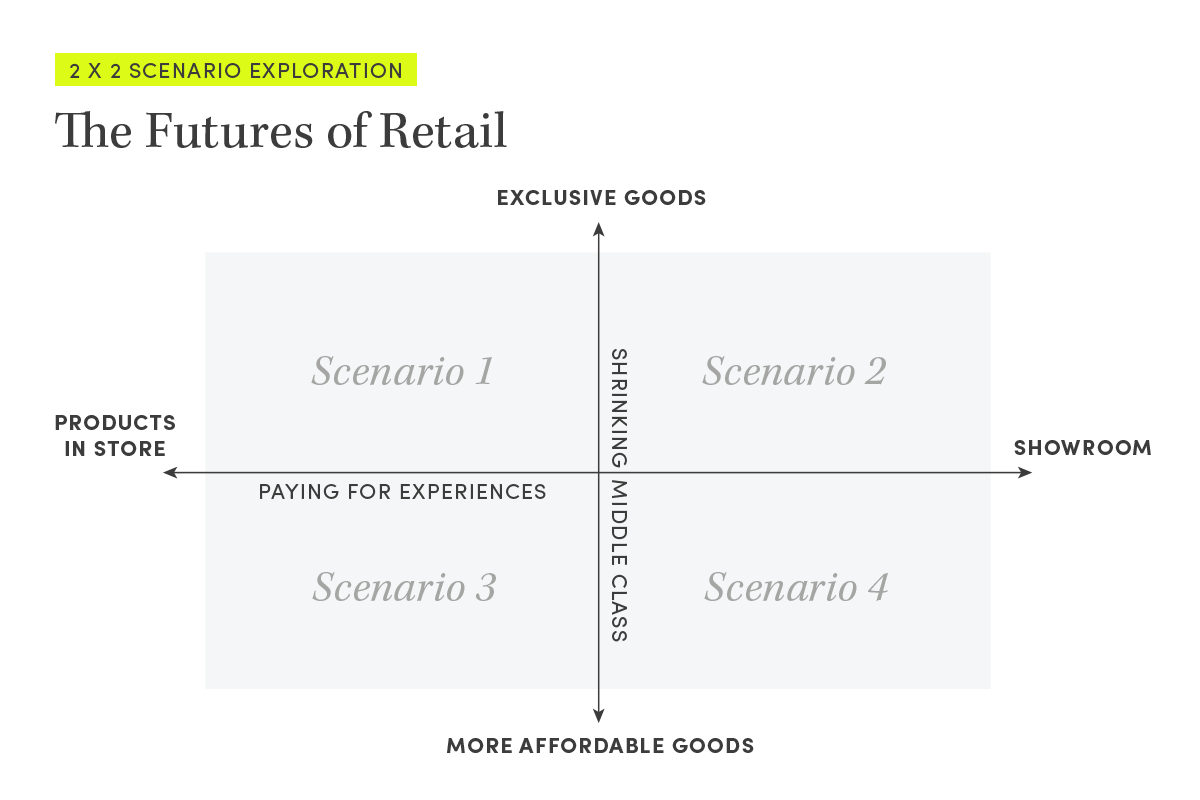Where Have The Malls Gone?
How to Be Less Surprised by the Future
by Jeremy Nulik

It was with much pageantry that the St. Louis Mills Mall opened in November 2003. A stadium-seating theater lead to an eclectic food court. The sprawling 250-million-dollar structure was equipped with an indoor skate park and go-carts. The variety of 200 shops and eight anchor stores was unlike anything else in the region. Even the St. Louis Blues signed an agreement to use the expansive ice rink as a practice facility.
Fast forward just nine years. The now nearly vacant 1.2 million square foot space sold for only 4.4 million dollars to a new investment group. Gone were nearly all of the anchor stores, the food court and go-carts. No more Blues.
This is mere conjecture, but the mall’s original developers were not somehow stupid in their investment. They had done the due diligence. They had the data: new housing starts, median incomes, real estate near main highways. They had the Blues. But still, it failed quickly. The fate of the St. Louis Mills Mall is not isolated. We have all seen the drone videos of abandoned shopping centers. Within the next five years, industry experts predict another 300 of the 1100 malls will be closing.
It is easy to look back and say, “Well, because Amazon.” But how could it be that very smart people, on a massive scale, could be blind to such an outcome?
I hate to say this, but, on a good day, we are much like those rooms of smart people. We all have outdated notions regarding our business, our industry and our community. We have hulking, calcified plans that resemble vacant shopping malls that are not responsive to change. What we need is a way to make our plans more flexible — to be less surprised by the future. What we need to do is approach planning like futurists.
A gold-standard way in which you can create alternative futures is a “2 X 2 Scenario Exploration,” a futuring exercise developed within Shell Corporation about 50 years ago. It starts by mapping two trends on x- and y-axes. The quadrants create four possible alternative futures. With those four alternative futures, you can begin to ask deeper questions about the future: How prepared are we for this kind of future? How likely is this future? Who would be most impacted by this future? The answers to these questions lead to more flexible plans.
In keeping with the retail theme, I spoke with a friend of mine who works with Target. He identified several weak social signals as well as marketplace trends that, in the aggregate, will likely affect the future of retail. One trend had to do with data that suggests consumers are paying more for experience than for new things. For years, retailers have produced piles of goods, and now people are more attuned to spend a premium on adventures or in-person experiences. Consumers seem to want a showroom over racks of products. The other trend had to do with a shrinking middle class. A majority of retailers sell goods to the middle market. In 2015, the number of people who live below the poverty level and the wealthy combined for a greater population than the middle class.
In filling out the 2 X 2, the first trend is one the x-axis and the second is on the y-axis. At the poles of the axes are the extremes of the trend. In this care, the x-axis would be “Products in the Store” and “Showroom” on the other. The y-axis would be “Exclusive Goods” is at one end and “More Affordable Goods” is on the other.
The four quadrants represent the different futures in which the retailer would find itself ten years from today. Assuming the pairing of an element from the x- and y-axis were to occur, what kind of future is that? How would retail look if they sold only exclusive goods,” and the stores were a showroom? Who would be most affected? How likely is that future? How prepared is the retailer for that future?
With questions like these, the retailer can begin to create plans that are more flexible to meet many possible futures. With the rate of innovations and the changing landscape in most industries, it is most likely that your company will be dealing with the unexpected. Better questions from the scenarios allow you to be less surprised when the future arrives.
Jeremy Nulik (jeremy@bigwidesky.com) is evangelist prime at bigwidesky, a human business consultancy, in St. Louis, Mo.